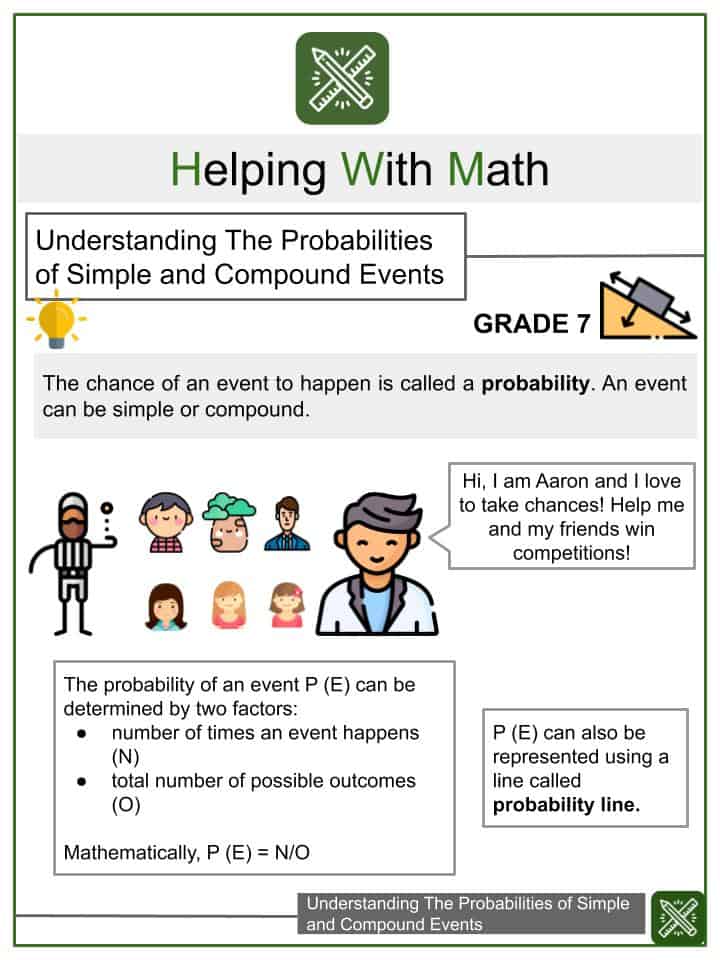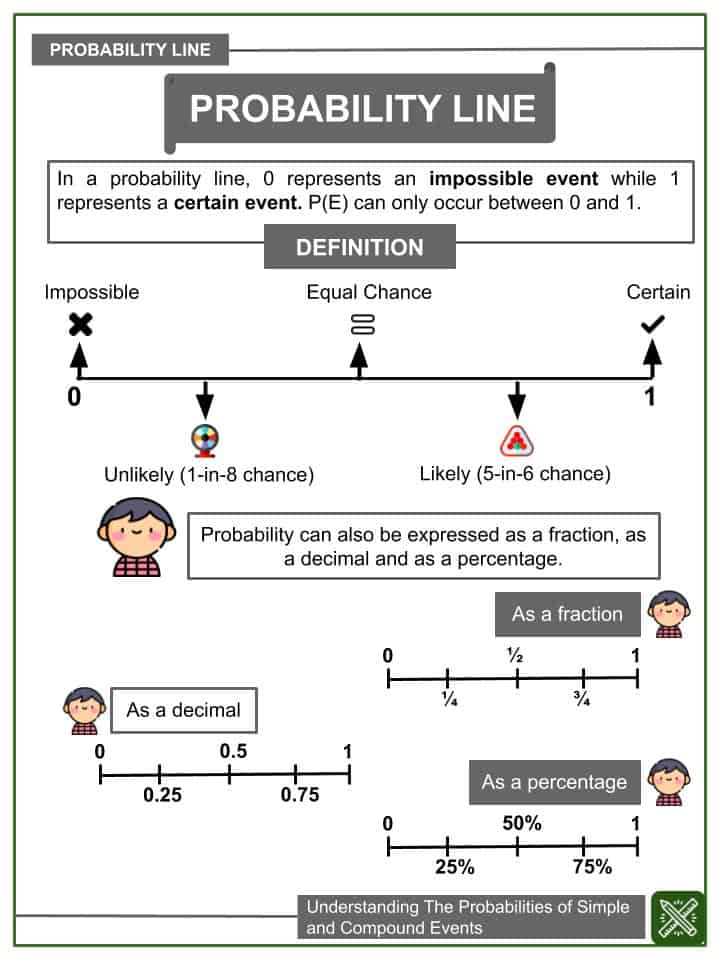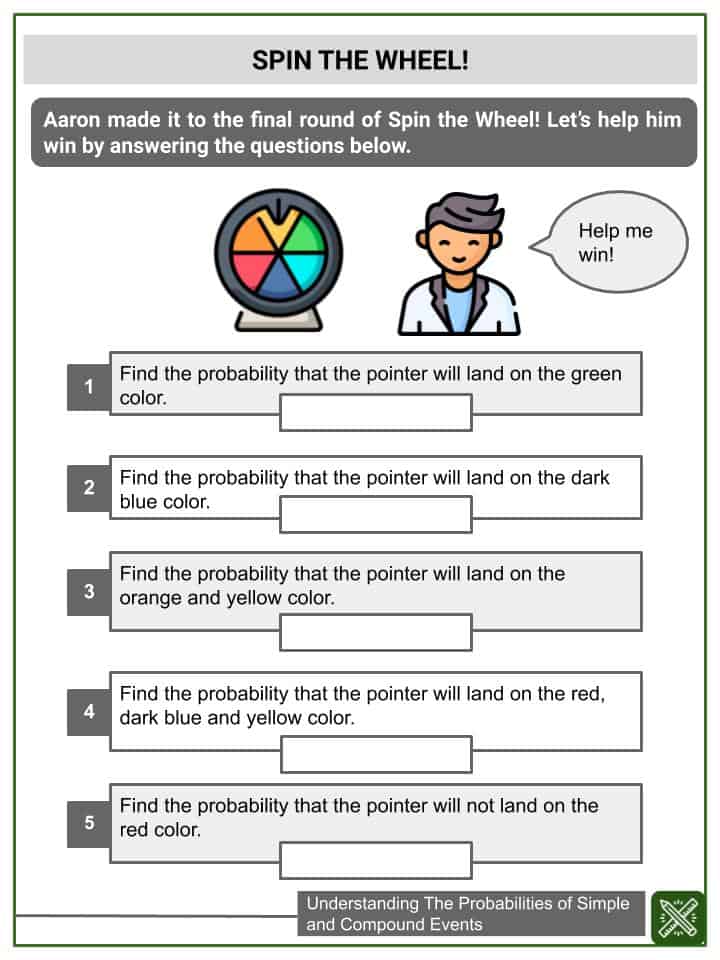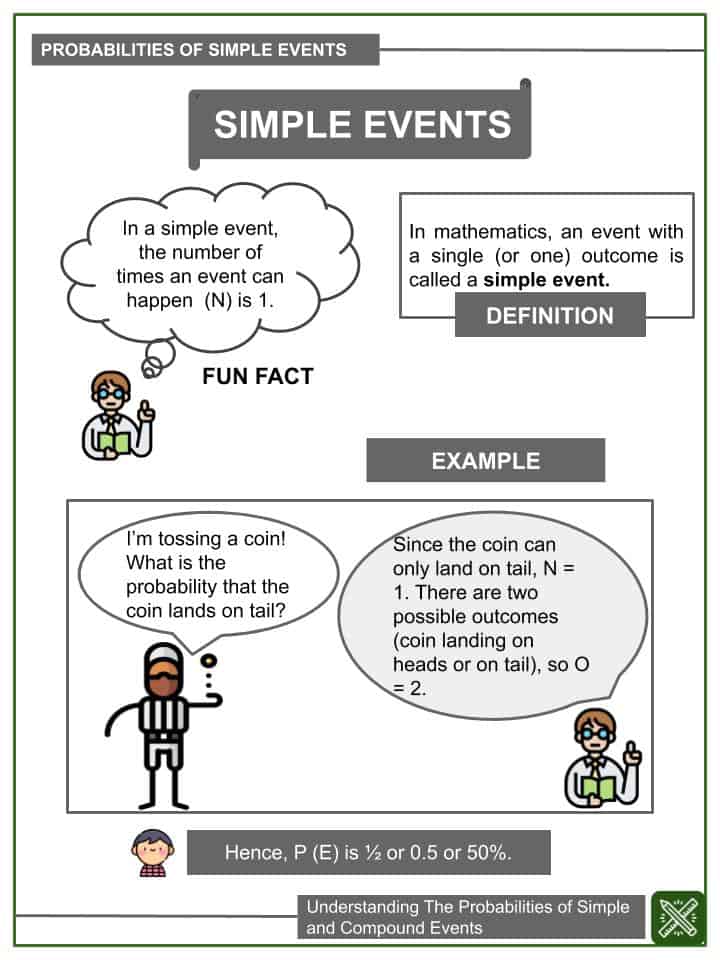Download Understanding the probabilities of Simple and Compound events Worksheets
Click the button below to get instant access to these premium worksheets for use in the classroom or at a home.

This worksheet can be edited by Premium members using the free Google Slides online software. Click the Edit button above to get started.
Download free sample
Not ready to purchase a subscription yet? Click here to download a FREE sample of this worksheet pack.
Definition:
The chance of an event to happen is called a probability. An event can be simple or compound.
Summary:
The probability of an event P (E) can be determined by two factors:
- number of times an event happens (N)
- total number of possible outcomes (O)
Mathematically, P (E) = N/O
P (E) can also be represented using a line called probability line. In a probability line, 0 represents an impossible event while 1 represents a certain event. P(E) can only occur between 0 and 1.
Probability can also be expressed as a fraction, as a decimal and as a percentage.
Example:
I’m tossing a coin! What is the probability that the coin lands on tail?
Since the coin can only land on tail, N = 1. There are two possible outcomes (coin landing on heads or on tail), so O = 2.
Hence, P (E) is ½ or 0.5 or 50%.
Understanding the probabilities of Simple and Compound events Worksheets
This is a fantastic bundle which includes everything you need to know about the probabilities of Simple events and Compound events Worksheets across 15+ in-depth pages. These are ready-to-use Common core aligned Grade 7 Math worksheets.
Each ready to use worksheet collection includes 10 activities and an answer guide. Not teaching common core standards? Don’t worry! All our worksheets are completely editable so can be tailored for your curriculum and target audience.
Resource Examples
Click any of the example images below to view a larger version.













